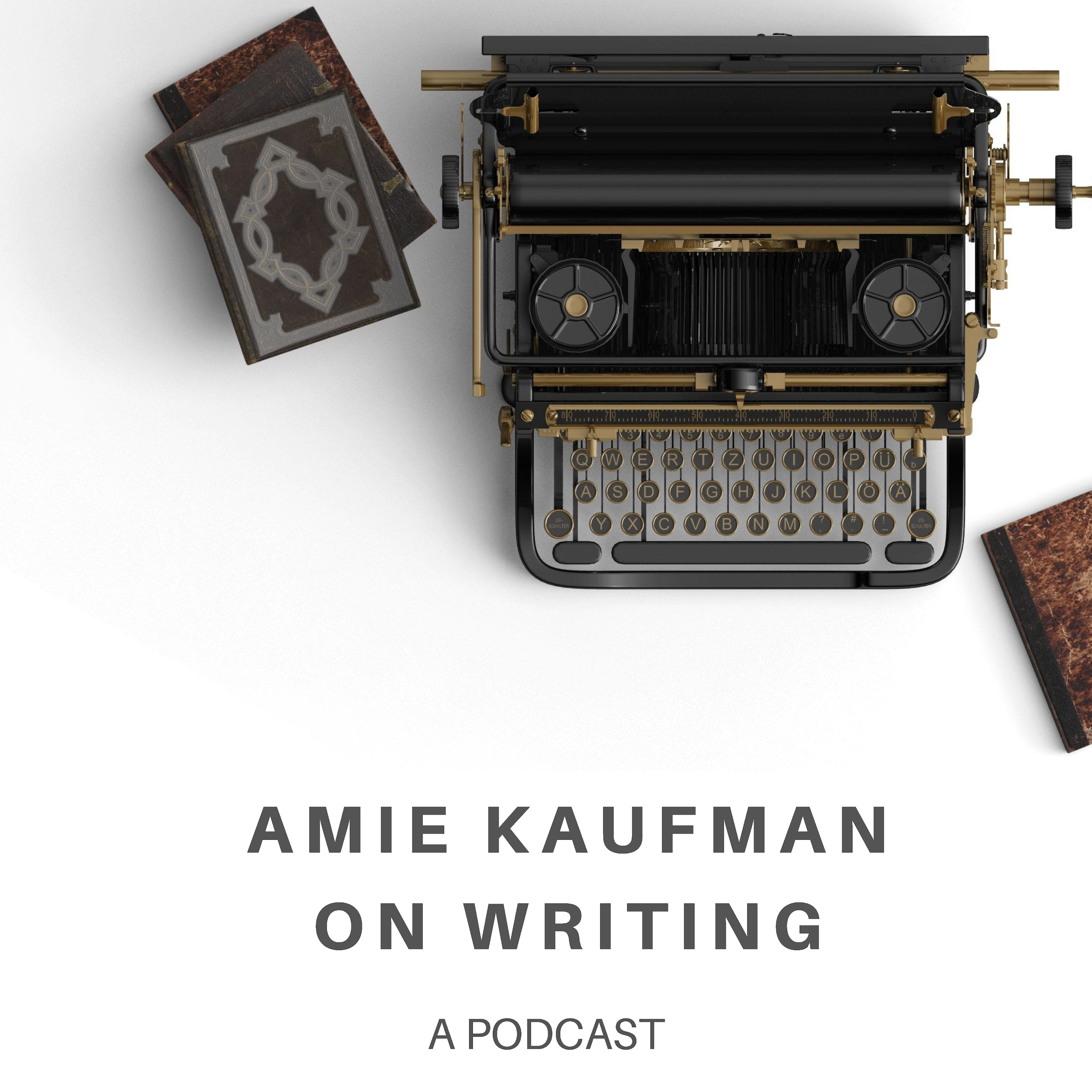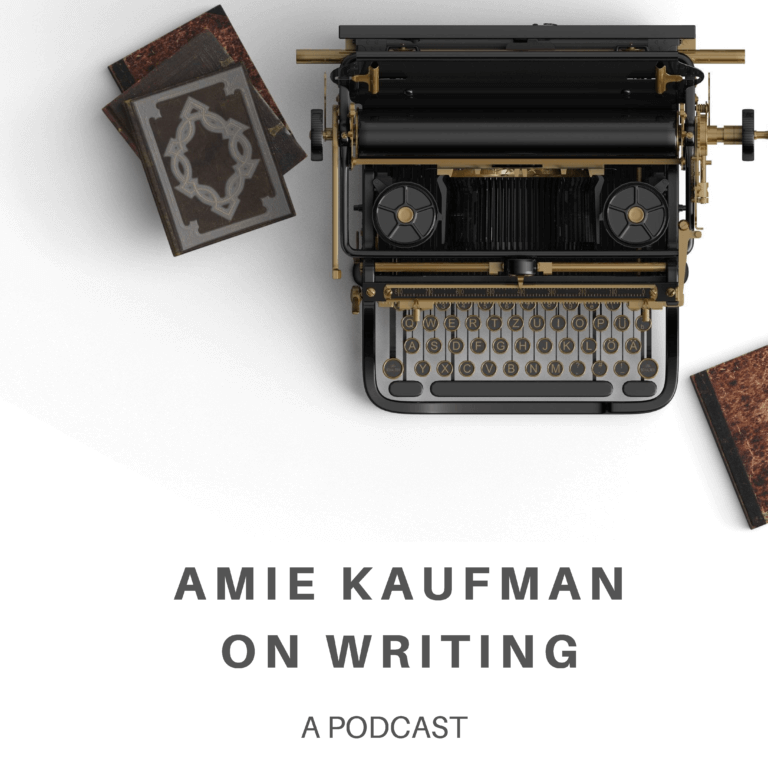Episode 8: How Do I Avoid Clichés?

New York Times and internationally bestselling author Amie Kaufman answers one question each week about writing craft. Full of practical tips and an exercise each week, this is a show for writers, for readers who want a backstage look at how their favourite authors craft their stories, or for creative writing classrooms.
The answer definitely isn’t to avoid familiar storylines completely—sometimes a path is well-trodden for a reason. So let’s get into the difference between a cliché (something we’ve seen over and over) and a trope (a familiar storyline or story element) and talk about how tropes might actually serve you.
You can find a transcript of this episode at my website, where you can also subscribe to my newsletter, get behind-the-scenes peeks at how I write, and any other news about new books, events or the podcast. You can also submit a question for the podcast on my website. For more on my book recommendation for this month, Lady Helen and the Dark Days Club, check out author Alison Goodman’s website. You can find me on Twitter or Instagram.

FOLLOW ON APPLE PODCASTS . FOLLOW ON SPOTIFY . FOLLOW ON OVERCAST . FOLLOW ON PODCAST ADDICT
Season 1, Episode 8: How do I avoid clichés? Transcript
Hi, my friends.
Welcome to Amie Kaufman on Writing, a short podcast that answers one question each week about how writers do what they do.
If you’re a writer, or you’re a reader interested in how your favourite authors craft their stories, then you’re in the right place.
This is Season 1, Episode 8: How do I avoid clichés?
As always, here’s my friend and producer Kate with this week’s question. Hi Kate, how are you?
Hi Amie, I’m good!
This week’s question came in from a couple of people, Melissa and Meghan, who asked pretty similar questions – how do I avoid clichés, and how do I avoid a storyline that feels like it’s been overdone?
Hmm, this is tricky! The answer definitely isn’t to avoid familiar storylines completely—sometimes a path is well-trodden for a reason. For example, not many people go to Paris without admiring the Eiffel Tower. Some things have a draw for us, we want to see them because we enjoy them, even if they are familiar.
So the distinction we’re looking for here is in the difference between a cliché and a trope. A cliché is tired, it’s something we’ve seen over and over, to the point that the elastic has been completely stretched. There isn’t any life left in it. We know exactly what will happen, when it will happen, and how it will happen.
That’s the part you want to avoid. So you do need to think about making sure your twists are surprising, your characters are full of life and acting on genuine motivations, and that you know what’s at stake for them. But what you don’t need to do is completely avoid all tropes.
A trope—and tropes are much-maligned by people who really mean cliché—is a familiar storyline or story element. Examples of tropes are two people who don’t like each other who have to pretend to be a couple, a band of misfits pulling a heist, a seemingly redneck country character making the city slickers look dumb—stuff like that. It’s all in the execution.
Tropes are guideposts—they tell us that it’s going to be this type of story, or that type of story. We need them. You can go completely off the beaten track and do something experimental, for sure, but don’t do it because you think there’s something wrong with using story elements other people have before you. There’s a reason they’re well worn. They’re the Eiffel Tower. They’re fascinating to us.
But say you’re leading a tour group who have all been to Paris a dozen times, or you’re writing a story you know has elements in common with other books in your area. Then the question becomes this: how do you keep your version fresh?
You could tour Paris through the lens of famous Parisian women, or through the lens of the revolution, or through French cooking traditions, or through the story of the many waves of migrants who have arrived in France over the centuries. Suddenly a familiar place is fresh and different, seen from a new angle.
See how you can do this for a story as well? The trick isn’t necessarily to leave Paris and go somewhere else—or to abandon a storyline or story element because you realize other people have used it before. It’s to know what you’re going to bring to it by way of worldbuilding, culture, humour or more that makes it uniquely yours.
Because it’s your touch, not your storyline that nobody’s ever thought of before, that’s going to make your story different.
Plenty of my books have familiar story elements in them – and yet the thing I hear most from readers is that they just couldn’t put them down. These Broken Stars sees a spoiled girl and a soldier shipwrecked together in an ‘odd couple forced to rely on each other to survive’ storyline. Aurora Rising features a scene in which our squad fakes their way into a masquerade ball to pull off a heist. The Other Side of the Sky features a couple who aren’t allowed to touch, not even a fingertip. None of these are things we invented, but we tell the stories in new ways, with our own touch, through our own lens, with our own drama or humour, with characters who know what they want, and why it matters. And that’s what makes them feel fresh.
Here’s an exercise: Pick something you’ve seen plenty of times before – a “chosen one” to go on a quest, say – and brainstorm five different angles on it, quick as you can. They can be very different, while still having the same heart. For example, look at Dumplin’ by Julie Murphy, and You Should See Me In A Crown by Leah Johnson – two fresh and really different takes on the idea of an unlikely candidate aiming to become a prom queen or beauty queen. Two tours of the same city through different lenses.
Next week, I’ll be answering a question about creating and visualizing your setting.
In the meantime, I’ll remind you to subscribe, and leave the podcast a review wherever you listen. It really helps get the podcast in front of new listeners.
You can find me at my website, which is at amiekaufman.com – you can subscribe to my newsletter there, for behind-the-scenes peeks at how I write, and any other news about new books, events or the podcast. You can also submit a question for the podcast on my website. You can find me on instagram at @AmieKaufmanAuthor or on twitter at @AmieKaufman. This podcast is produced by the lovely Kate Armstrong, host of one of my favourite podcasts, The Exploress, which time travels through women’s history one era at a time. You can find her at theexploresspodcast.com.
For now, thanks so much for listening – enjoy your reading, and enjoy your writing.
Have a Question?
You can submit your question using the form using the form on the main podcast page — if you’re stuck on one aspect of your work, or you’re wondering how your favourite author pulled something off, we’d love to hear from you!
